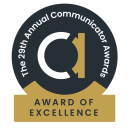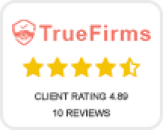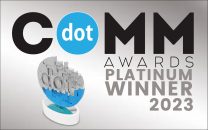The Difference Between Inbound and Outbound Marketing
A new year means it’s prime time to hit the ground running if you haven’t already! If you’ve been reminiscing about last year’s magical moments and wondering what 2019 has in store, why not turn an eye to your marketing for a second.
Growth, leveling-up, doing things even bigger and better—it’s never a bad thing to set the bar a little higher for your business and to chase those wild dreams. So what do you want most for this upcoming year? Or are you thinking, “where the heck do we go from here?”
Here’s some food for thought: do you know the difference between inbound and outbound marketing? And, do you know why it matters?
If you’ve got your heart set on making grand and glorious gains in your business this year, maybe it’s time to dive into your marketing strategy for some refining and defining (while making time for a little happy dance of course!)
Sound like an awesomesauce plan? Let’s dive deep and get to the bottom of the difference between inbound and outbound marketing.
First of all, we know this marketing lingo can come off as fancy jargon so we’re gonna break it down and make things crystal clear. You can thank us later when you feel like an inbound/outbound expert!
Let’s jump in.
Outbound marketing is traditional marketing in a sense.
Think ads on TV and on the radio, brochures or direct mail, newspaper and magazine ads, telemarketing, billboards, cold calls, etc.
This type of marketing has been around for decades and it’s meant to grab as many people’s attention as possible (aka it’s hard to avoid and it’s casting a big net).
For example, a detergent company can market and advertise through TV commercials, flyers, and a giant billboard on the highway—places where people will eventually stumble across it in plain sight because everyone is exposed to traditional media. This makes sense if you’re selling detergent, why? Because everyone needs detergent. So anywhere they see an ad for it, it’s applicable to them.
Sure you can flip the channel, recycle the flyer, or avert your eyes back to the road, but the company already captured your attention because you literally couldn’t help but notice them.
As the name alludes to, think of outbound as a shotgun approach. A shotgun that reaches a broad and faraway target but it’s not as ideal when you’re aiming for smaller, niche markets, with your products or services.
For example, toilet paper is a staple in most households and something people need and use on a daily basis. When it comes to toilet paper, everyone is your customer and any advertising or marketing that you do is relevant—everywhere and any time.
On the other hand, say you want to start an ugly Christmas sweater business in your local town of less than 100,000 people. Throwing a commercial up on Fox is casting a huge net with only one fish in the pond at best. Another way to look at it is why spend thousands of dollars to reach nearly 3 million people on TV when all you really want to do is reach the 100,000 in your town.
With a lofty marketing budget, the sky’s the limit for how many people you can reach with outbound; whether or not it leads to a better ROI is another story.
Now, inbound is a newer marketing concept that’s been going viral these days.
Marketers and businesses are flocking towards inbound since it uses fresher online tactics like targeted SEO, content marketing or blogging, social media, infographics, email newsletters, etc.
Inbound marketing is the holy grail of all marketing and for good reason. The approach is tailored and aimed at a specific group of highly qualified buyers who become your biggest fans and loyal customers.
These people have done their research, believe and trust in what you have to offer, and are ready to buy under the right conditions. Inbound is also a less expensive way to go if every dollar counts in your business. Data and research show that inbound tends to have a better ROI in the long run too.
So think of inbound marketing as a strategic nudge in the right direction (and at the tail end of the buying cycle in the third or fourth stage) where someone is looking specifically for YOU and what you do.
Inbound directs people where to go at the exact moment when they’re ready for you and your amazing service or offer. Those who are searching for you are gonna respond to your inbound marketing because they need you and they’re ready to buy.
Our advice? Don’t let these folks down! Be ready to seize the opportunity when they’re out there looking for you. It’s the opposite of outbound where the strategy is to tell people about you BEFORE they even care or realize that they might need you.
For example, a new late-night and classy burger spot might start its inbound marketing with a blog post on its most popular menu item with SEO-rich words (so their ideal peeps can find them through Google and keyword searches). Then they’ll go and share the post on social media with an enticing special deal on Saturday nights.
Let’s say someone craves a burger at 1 a.m. and so they head to Google on their phone or computer, or even Alexa or Google Home, and ask for “burger places near me.” If you’ve honed in on your inbound marketing tactics, BAM just like that you’ll show up in the search results. Maybe that Instagram post helped too since it happened to go viral.
Inbound marketing is the secret sauce for any business. It’s the key ingredient not enough people talk about, the secret hiking trail to the waterfall, because it’s your advantage over the competition and everyone else.
Inbound marketing is a bit of an art form as you navigate through the tricky territory of finding, engaging, and connecting with the right people. Lucky for you, our fantastic team at Zonion has the inner wisdom and creative expertise to figure all of this out for you. We’ve been doing this for decades and have learned the difference between inbound and outbound marketing and when to use one or the other in the most effective manner.
So how do you decide on the best marketing path for your business?
Basically, it’s the path or strategy that works. They say we shouldn’t change what’s working and that’s mostly true, right? But it doesn’t hurt to try something new either and to venture out of our safe, comfortable bubbles. Channel your courage as a business owner, get a taste of what else is out there, because there’s always a whole other world of possibility just waiting to be explored.
The truth is, people, change which means customers change. What was stellar and amazing for you last year might be a bust next year. If you’re keen on sticking with your current outbound or inbound approach or want to mix the best of both worlds, stay open about your tactics while continuously measuring and evaluating the results you get.
Marketing can be scary and exciting at the same time but that’s why we love what we do. Our Zonion tribe will help you get to where you want to be, and reach exactly who you want to reach! We hope we’ve clearly defined the difference between inbound and outbound marketing for you.
Are you ready to make waves in your business and smash your marketing goals in 2019? Connect with us today and let’s kickstart your amazing year!




























